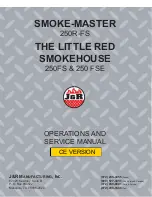
19
Using The Oven
To prepare Meat and Poultry for Roasting in your Oven
(a) Wipe the meat or poultry, dry well and weigh it. Meat which has for been stored
in a refrigerator should be allowed to come to room temperature before
cooking, and frozen meat or poultry must be completely defrosted before
placing in the oven.
(b) The weight of any stuffing used should be added before calculating the cooking
time.
(c) Place meat/poultry in a meat pan of a suitable size. Small joints weighing less
than 1.75kg (31/2 lbs) should be roasted in a smaller meat pan/tin – or they
may be ‘pot roasted’ – a small joint or a large meat pan causes unnecessary
oven splashing and evaporation of meat juices.
(d) Additional fat should not be added, except for veal, very lean meat or poultry
which can either be ‘larded’ with fat bacon or brushed very sparingly with
cooking oil or melted fat.
(e) Beef, lamb, mutton and poultry may be dusted lightly with seasoned flour to
give a crisp outer surface. The skin of duck and goose should be pricked to
release excess fat during cooking, and the rind of pork should be scored,
brushed lightly with oil, and rubbed with salt to give crisp crackling.
(f) Meat and poultry wrapped in, or covered with a tent of aluminium foil will be
juicy and tender. Roasting bags offer the same advantages. Always follow the
manufacturer’s pack instructions.
(g) Potatoes for roasting only require to be brushed with cooking oil or melted fat.
Frozen Meat and Poultry
Joints of meat and whole birds should be defrosted slowly, preferably in a domestic
refrigerator (allowing 5-6 hours per 450g, 1 lb), or at room temperature (allowing 2-3
hours per 450g, 1 lb).
Frozen meat or poultry must be completely defrosted before placing in the oven. It
is
essential to wash thoroughly and cook meat and poultry immediately after
defrosting.
Always allow oven to preheat prior to use. For conventional mode (top and base
heat) allow 15 minutes, and 20 minutes for base heat only and top heat only.







































